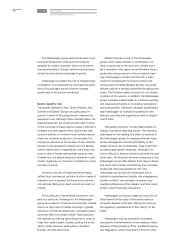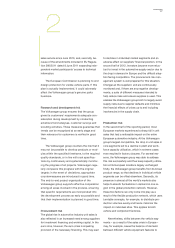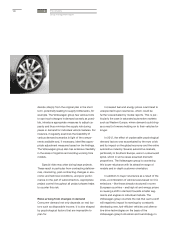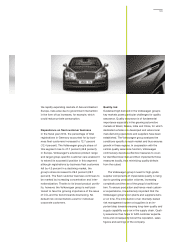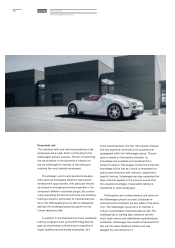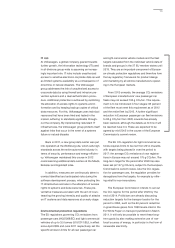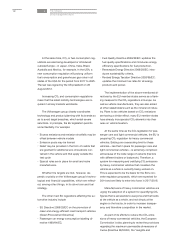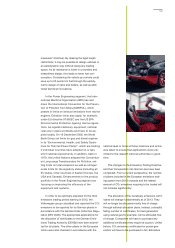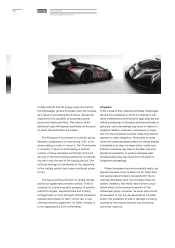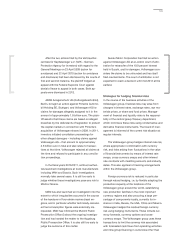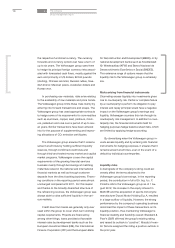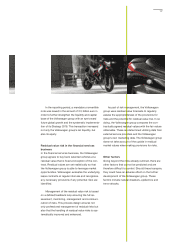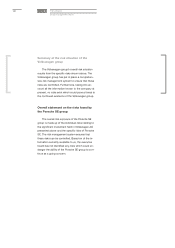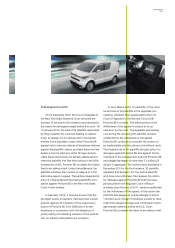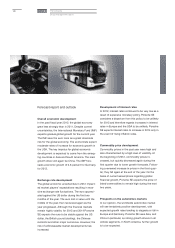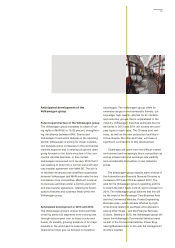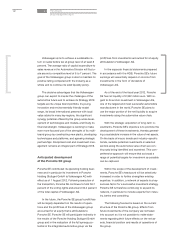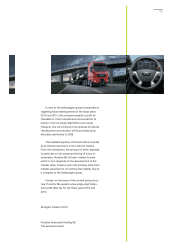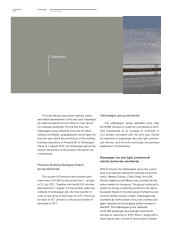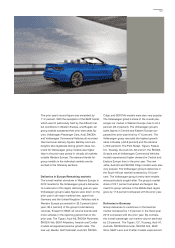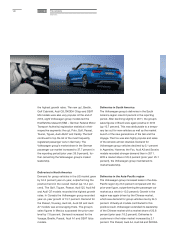Porsche 2012 Annual Report Download - page 140
Download and view the complete annual report
Please find page 140 of the 2012 Porsche annual report below. You can navigate through the pages in the report by either clicking on the pages listed below, or by using the keyword search tool below to find specific information within the annual report.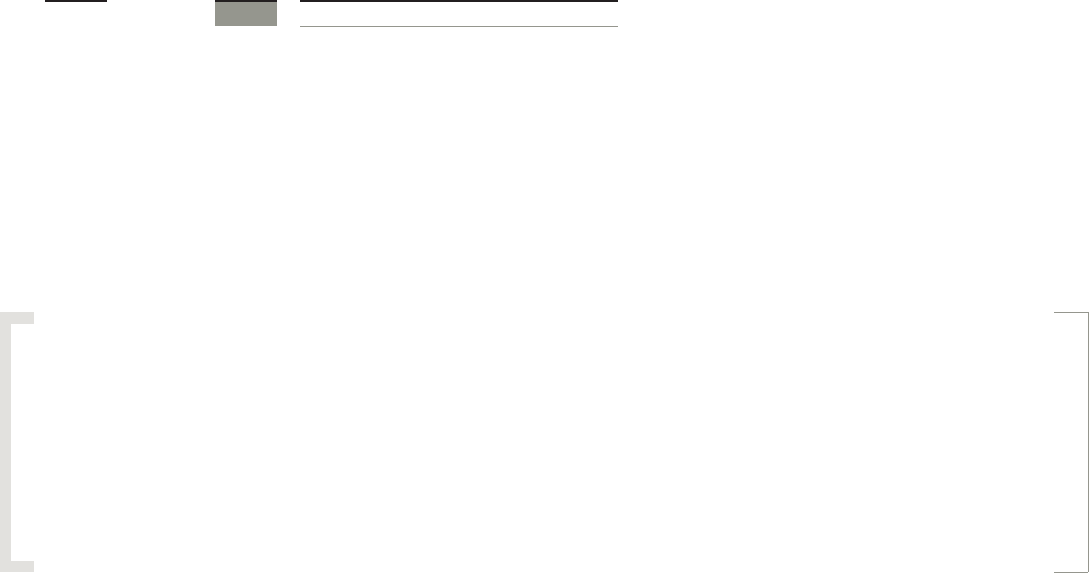
the respective functional currency. The currency
forwards and currency options can have a term of
up to six years. The Volkswagen group uses them
to hedge its principal foreign currency risks associ-
ated with forecasted cash flows, mostly against the
euro and primarily in US dollars, British pounds
(sterling), Chinese renminbi, Russian rubles, Swe-
dish kronor, Mexican pesos, Australian dollars and
Korean won.
In purchasing raw materials, risks arise relating
to the availability of raw materials and price trends.
The Volkswagen group limits these risks mainly by
entering into forward transactions and swaps. The
Volkswagen group has used appropriate contracts
to hedge some of its requirements for commodities
such as aluminum, copper, lead, platinum, rhodi-
um, palladium and coal over a period of up to sev-
en years. Similar transactions have been entered
into for the purpose of supplementing and improv-
ing allocations of CO2 emission certificates.
The Volkswagen group ensures that it remains
solvent at all times by holding sufficient liquidity
reserves, through confirmed credit lines and
through tried-and-tested money market and capital
market programs. Volkswagen covers the capital
requirements of the growing financial services
business mainly through borrowings at matching
maturities raised in the national and international
financial markets as well as through customer
deposits from the direct banking business. Financ-
ing conditions in the reporting period were almost
unchanged compared with 2011. For this reason
and thanks to the broadly diversified structure of
the refinancing sources, the Volkswagen group was
always able to raise sufficient liquidity in the vari-
ous markets.
Credit lines from banks are generally only ever
used within the group to cover short-term working
capital requirements. Projects are financed by,
among other things, loans provided at favorable
interest rates by development banks such as the
European Investment Bank (EIB), the International
Finance Corporation (IFC) and the European Bank
for Reconstruction and Development (EBRD), or by
national development banks such as Kreditanstalt
für Wiederaufbau (KFW) and Banco Nacional de
Desenvolvimento Econômico e Social (BNDES).
This extensive range of options means that the
liquidity risk to the Volkswagen group is extremely
low.
Risks arising from financial instruments
Channeling excess liquidity into investments gives
rise to counterparty risk. Partial or complete failure
by a counterparty to perform its obligation to pay
interest and repay principal would have a negative
impact on the Volkswagen group’s earnings and
liquidity. Volkswagen counters this risk through its
counterparty risk management. In addition to coun-
terparty risk, the financial instruments held for
hedging purposes hedge balance sheet risks, which
are limited by applying hedge accounting.
By diversifying when the Volkswagen group in-
vests excess liquidity and by entering into financial
instruments for hedging purposes, it ensures that it
remains solvent at all times, even in the event of a
default by individual counterparties.
Liquidity risks
A downgrade of the company’s rating could ad-
versely affect the terms attached to the
Volkswagen group’s borrowings. In the reporting
period, the contribution in full of Dr. Ing. h.c. F.
Porsche AG to the Volkswagen group as of 1 Au-
gust 2012, the increase in the equity interest in
MAN SE and the acquisition of sports motorcycle
manufacturer Ducati Motor Holding S.p.A. resulted
in a large outflow of liquidity. However, the strong
performance by the company’s operating business
minimized the impact of these transactions on its
liquidity position, thus maintaining Volkswagen’s
financial stability and flexibility overall: Standard &
Poor’s (S&P) affirmed the group’s existing rating
and raised its outlook to “positive”. Moody’s Inves-
tor Service assigned the rating a positive outlook in
the prior year.
2The company
Group management report
2136


